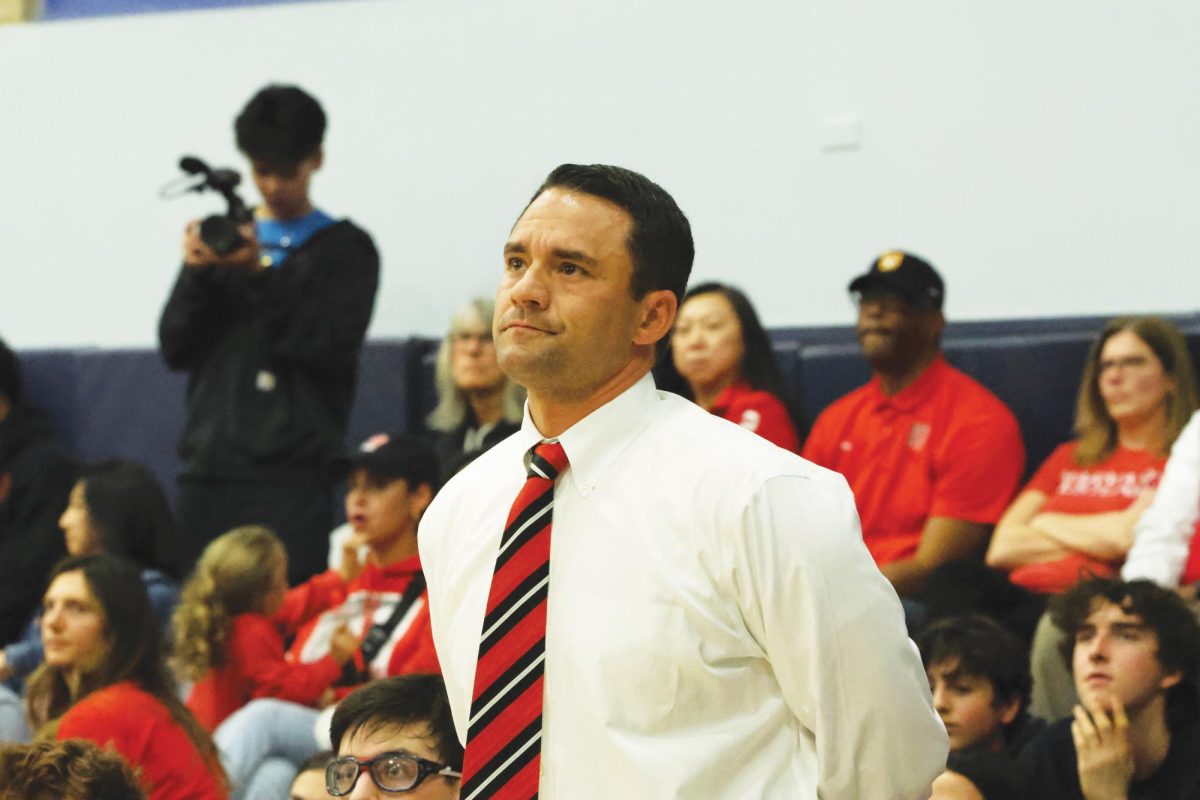By Sarah Hoberman and Sonya Mitchell
Â
After a long day of hiking up and down stairs and exhausting not only her mind but also her feet, the first thing Vanessa Zackler â08 does when she gets into her car to go home is throw off her flats and start massaging her feet.
âI donât even know if itâs worth it anymore, wearing these uncomfortable shoes,â she said.
Many students, after a long day at school, complain not only about their four hours of studying, but also about their aching feet. However, they continue to wear flats and sandals.
Ann Helpern (Emily â07) owns the shoe store Habit, which carries trendy shoes.
The shelves of her Brentwood store overflow with colorful ballet flats and glittering sandals. The store sells a lot of merchandise to the young girls who shop in the area, many of whom attend Harvard-Westlake.
âI have absolutely noticed this increase,â Helpern said. âFlats, ballet and dancing footwear are all on fire right now. Thirty to 40 percent of my merchandise is those types of shoes.â
Students have also observed flat shoes clicking around campus.Â
âI have definitely noticed more people wearing ballet flats and sandals, and it is really rare to find people walking around with laced up tennis shoes,â Caroline Richman â09 said.
Flimsy flip-flops have also become more popular, not only because of their simple style, but because of the convenience of waking up in the morning and slipping them on and off, some students say. But there is a flip side.
âI was rushing to my language class in Seaver and running up the stairs, and my Havaianas flip-flops broke,â Emma Katz â09 said. âI tried to fix them, and I kind of did, but I still wear them almost every day even if they occasionally break again because they are easy and match with all my outfits.â
Flat shoes and sandals have become so stylish that even flip-flops, which have typically been popular only among water polo players, have become popular throughout the school.
Some students wear Rainbows, flat footed flip-flops, every day.
âHistorically, water polo players are perceived as surfers and wore Rainbow flip-flops because they were easy to slip on after swimming,â water polo player Bennett Givens â07 said. âBut now everyone wears them because sandals are now so popular.â
However, these cute and trendy shoes could also be damaging to studentsâ health.
Allison Lieber â07 remembered how she used to sprint down the stairs of her house everyday to meet the honk of her carpool, only to be halted by the booming voice of her father demanding that she change into sneakers.
 âMy dad used to tell me this story about how his sister was wearing flip-flops and stepped on a nail, which seriously hurt her,â she said. âHe would say, âAllison, go upstairs and put some real shoes on.ââ
âIâve seen injuries from unprotected feet like smashing into things and stepping on things,â Dr. Michael Lieber, Lieberâs father, said. âYou can fall when you run and they are bad for your feet. I used to let her wear them at home, but never to school.â
However, every time he caught her, he forced her to take the walk of shame back upstairs with her head down and lace up her tennis shoes: not trendier Converse, Keds or Vans but Nike sneakers.
Humans were designed to be bare-footed mammals, able to trek through the jungle and other rugged terrain, said Dr. Chris Vincent, a chiropractor who prescribes orthotics and has treated people hurt by shoes that donât provide ample support.
But, in the urban lifestyle that students lead, feet have not been challenged by those types of terrains and therefore are very weak.
âThe ligaments in the foot are supposed to support the arch and keep the bones in place,â Vincent said. âWhen people wear these shoes that are flat with no support, it weakens the foot and the propioceptive nerves. The foot then has to rely on the ligaments for all the support and that puts a lot of stress on them. When that happens, people should get orthotics in order to correct it or wear the proper shoes.â
âFeet are the base of support of the body just like the foundation of the building, it needs to be strong.â
Now, as Lieber walks down those same stairs, her dad glares at her but only makes a sly comment: âI canât stop you now, you are old enough, but you know the effects.â






































